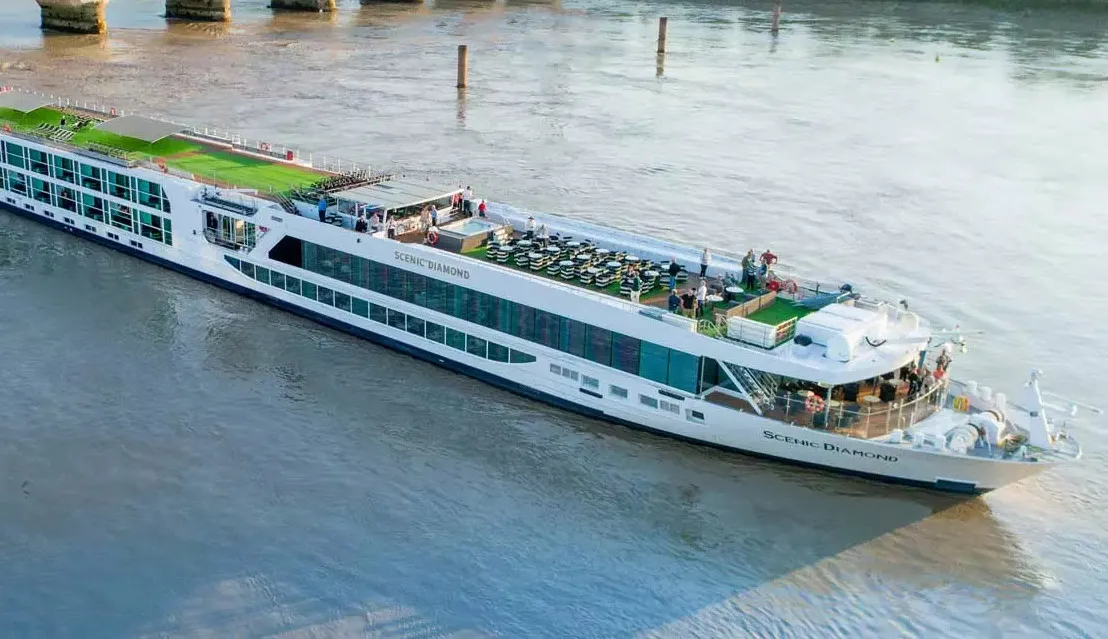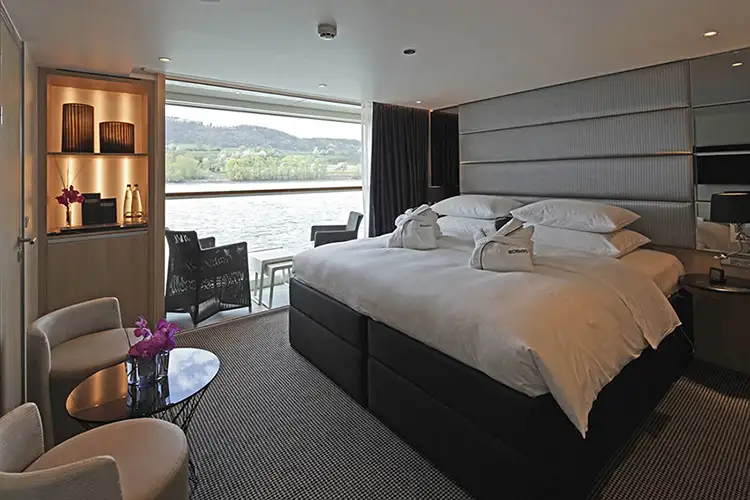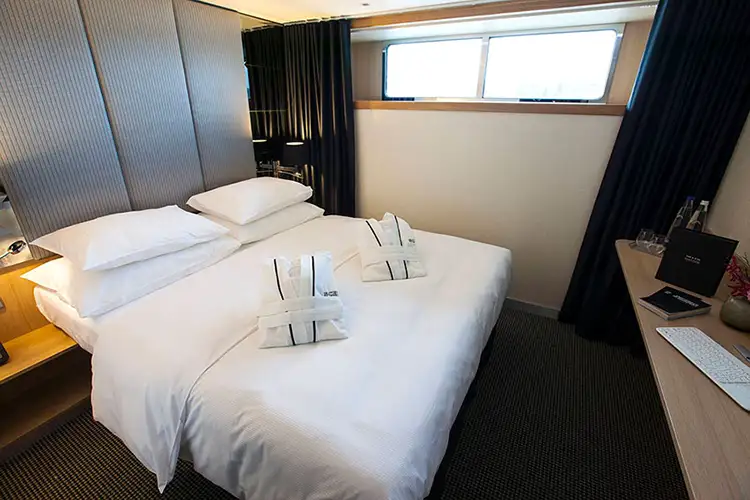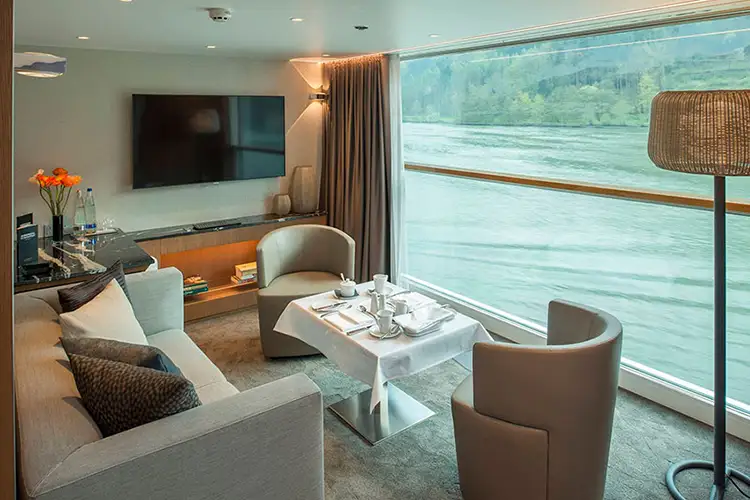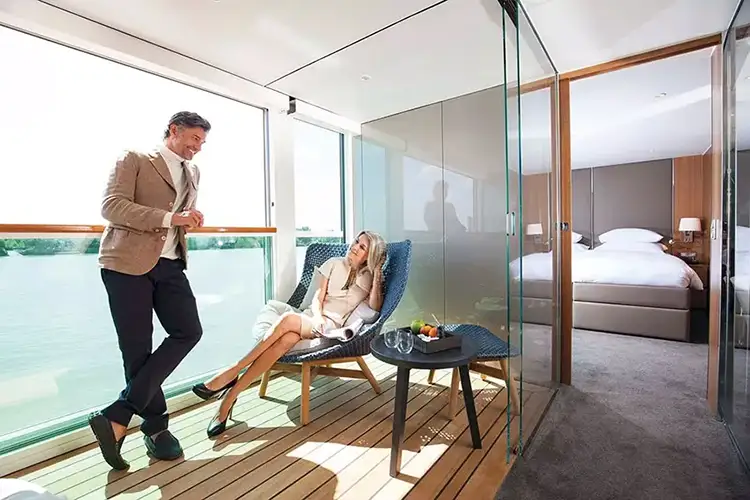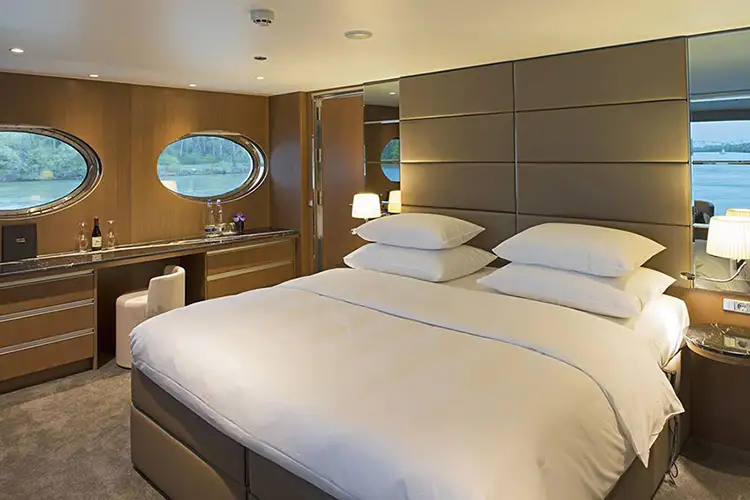Scenic Garonne: 20 nights from Bordeaux with Scenic Diamond
Sep 25, 2025
France
Cruise itinerary
Departure Port: Bordeaux ➞
Landing: Lyon
-
Thursday, September 25, 2025 - not foundBordeaux
-
Friday, September 26, 2025 not found - not foundBordeaux
-
Saturday, September 27, 2025 not found - not foundLibourne
-
Sunday, September 28, 2025 not found - not foundBordeaux
-
Monday, September 29, 2025 not found - not foundLibourne
-
Tuesday, September 30, 2025Navigation
-
Wednesday, October 1, 2025 not found - not foundBordeaux
-
Thursday, October 2, 2025 not found - not foundBordeaux
-
Friday, October 3, 2025 not found - not foundPauillac
-
Saturday, October 4, 2025 not found - not foundBlaye
-
Sunday, October 5, 2025 not found - not foundBordeaux
-
Monday, October 6, 2025 not found - not foundLyon
-
Tuesday, October 7, 2025 not found - not foundTournus
-
Wednesday, October 8, 2025 not found - not foundTournon
-
Thursday, October 9, 2025 not found - not foundAvignone
-
Friday, October 10, 2025 not found - not foundAvignone
-
Saturday, October 11, 2025 not found - not foundArles
-
Sunday, October 12, 2025 not found - not foundViviers
-
Monday, October 13, 2025Navigation
-
Tuesday, October 14, 2025 not found - not foundLyon
-
Wednesday, October 15, 2025 not foundLyon
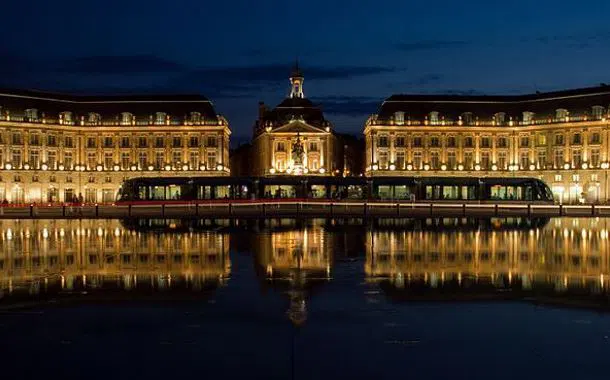
Bordeaux
Bordeaux is city on the Atlantic Ocean and its port hosts big ships. The city had initially the name Burdigala and was established in III Century B.C. by the Gallic people.
It was a neuralgic centre for the International commerce of tin and lead. After the arrival of the Romans, Bordeaux becomes one of the richest cities of Gallia and is robbed many times by populations such as Visigoths and Vandals. With the passing of time, the City starts economic relationships with England trading in salt and wine and, in XVI Century, also the colonial sugar and slaves start having a leading role in the sustenance of the city.
Bordeaux has a liveable city centre that can be visited by foot and that offers beautiful attractions and energy. At night, the city get crowded with young people filling up the main squares and the bars where you can taste excellent wines and plunge in the romantic atmosphere that the city assumes after the sunset. You can’t miss out Château de la Brède, a gothic style castle dated back to XIV Century, surrounded by a moat and an English garden. The philosopher Montesquieu lived here and tourists can visit his library and his bedroom that are just like they were in XIX Century.
We suggest to visit also the beautiful Saint Eloi Church. Established in XII Century, the construction and renovation works lasted until 1400’s. The current structure is dated back to this period. The church is one of the stop-overs of Santiago de Compostela walking tour and is part of UNESCO World Heritage. Bordeaux offers a wide variety of gastronomic and wine choices. There are many restaurants and bars where you can taste the best wines on the market and an amazing cuisine.

Bordeaux
Bordeaux is city on the Atlantic Ocean and its port hosts big ships. The city had initially the name Burdigala and was established in III Century B.C. by the Gallic people.
It was a neuralgic centre for the International commerce of tin and lead. After the arrival of the Romans, Bordeaux becomes one of the richest cities of Gallia and is robbed many times by populations such as Visigoths and Vandals. With the passing of time, the City starts economic relationships with England trading in salt and wine and, in XVI Century, also the colonial sugar and slaves start having a leading role in the sustenance of the city.
Bordeaux has a liveable city centre that can be visited by foot and that offers beautiful attractions and energy. At night, the city get crowded with young people filling up the main squares and the bars where you can taste excellent wines and plunge in the romantic atmosphere that the city assumes after the sunset. You can’t miss out Château de la Brède, a gothic style castle dated back to XIV Century, surrounded by a moat and an English garden. The philosopher Montesquieu lived here and tourists can visit his library and his bedroom that are just like they were in XIX Century.
We suggest to visit also the beautiful Saint Eloi Church. Established in XII Century, the construction and renovation works lasted until 1400’s. The current structure is dated back to this period. The church is one of the stop-overs of Santiago de Compostela walking tour and is part of UNESCO World Heritage. Bordeaux offers a wide variety of gastronomic and wine choices. There are many restaurants and bars where you can taste the best wines on the market and an amazing cuisine.
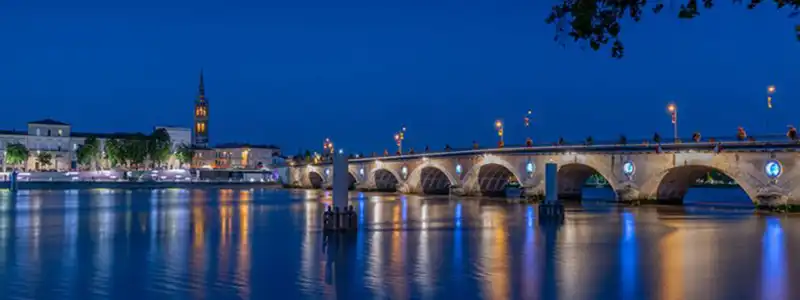
Libourne

Bordeaux
Bordeaux is city on the Atlantic Ocean and its port hosts big ships. The city had initially the name Burdigala and was established in III Century B.C. by the Gallic people.
It was a neuralgic centre for the International commerce of tin and lead. After the arrival of the Romans, Bordeaux becomes one of the richest cities of Gallia and is robbed many times by populations such as Visigoths and Vandals. With the passing of time, the City starts economic relationships with England trading in salt and wine and, in XVI Century, also the colonial sugar and slaves start having a leading role in the sustenance of the city.
Bordeaux has a liveable city centre that can be visited by foot and that offers beautiful attractions and energy. At night, the city get crowded with young people filling up the main squares and the bars where you can taste excellent wines and plunge in the romantic atmosphere that the city assumes after the sunset. You can’t miss out Château de la Brède, a gothic style castle dated back to XIV Century, surrounded by a moat and an English garden. The philosopher Montesquieu lived here and tourists can visit his library and his bedroom that are just like they were in XIX Century.
We suggest to visit also the beautiful Saint Eloi Church. Established in XII Century, the construction and renovation works lasted until 1400’s. The current structure is dated back to this period. The church is one of the stop-overs of Santiago de Compostela walking tour and is part of UNESCO World Heritage. Bordeaux offers a wide variety of gastronomic and wine choices. There are many restaurants and bars where you can taste the best wines on the market and an amazing cuisine.

Libourne

Bordeaux
Bordeaux is city on the Atlantic Ocean and its port hosts big ships. The city had initially the name Burdigala and was established in III Century B.C. by the Gallic people.
It was a neuralgic centre for the International commerce of tin and lead. After the arrival of the Romans, Bordeaux becomes one of the richest cities of Gallia and is robbed many times by populations such as Visigoths and Vandals. With the passing of time, the City starts economic relationships with England trading in salt and wine and, in XVI Century, also the colonial sugar and slaves start having a leading role in the sustenance of the city.
Bordeaux has a liveable city centre that can be visited by foot and that offers beautiful attractions and energy. At night, the city get crowded with young people filling up the main squares and the bars where you can taste excellent wines and plunge in the romantic atmosphere that the city assumes after the sunset. You can’t miss out Château de la Brède, a gothic style castle dated back to XIV Century, surrounded by a moat and an English garden. The philosopher Montesquieu lived here and tourists can visit his library and his bedroom that are just like they were in XIX Century.
We suggest to visit also the beautiful Saint Eloi Church. Established in XII Century, the construction and renovation works lasted until 1400’s. The current structure is dated back to this period. The church is one of the stop-overs of Santiago de Compostela walking tour and is part of UNESCO World Heritage. Bordeaux offers a wide variety of gastronomic and wine choices. There are many restaurants and bars where you can taste the best wines on the market and an amazing cuisine.

Bordeaux
Bordeaux is city on the Atlantic Ocean and its port hosts big ships. The city had initially the name Burdigala and was established in III Century B.C. by the Gallic people.
It was a neuralgic centre for the International commerce of tin and lead. After the arrival of the Romans, Bordeaux becomes one of the richest cities of Gallia and is robbed many times by populations such as Visigoths and Vandals. With the passing of time, the City starts economic relationships with England trading in salt and wine and, in XVI Century, also the colonial sugar and slaves start having a leading role in the sustenance of the city.
Bordeaux has a liveable city centre that can be visited by foot and that offers beautiful attractions and energy. At night, the city get crowded with young people filling up the main squares and the bars where you can taste excellent wines and plunge in the romantic atmosphere that the city assumes after the sunset. You can’t miss out Château de la Brède, a gothic style castle dated back to XIV Century, surrounded by a moat and an English garden. The philosopher Montesquieu lived here and tourists can visit his library and his bedroom that are just like they were in XIX Century.
We suggest to visit also the beautiful Saint Eloi Church. Established in XII Century, the construction and renovation works lasted until 1400’s. The current structure is dated back to this period. The church is one of the stop-overs of Santiago de Compostela walking tour and is part of UNESCO World Heritage. Bordeaux offers a wide variety of gastronomic and wine choices. There are many restaurants and bars where you can taste the best wines on the market and an amazing cuisine.
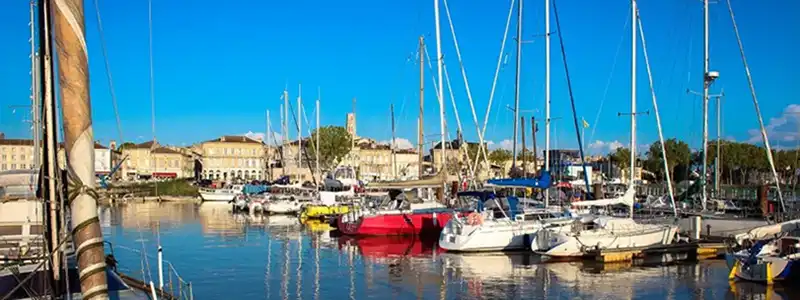
Pauillac
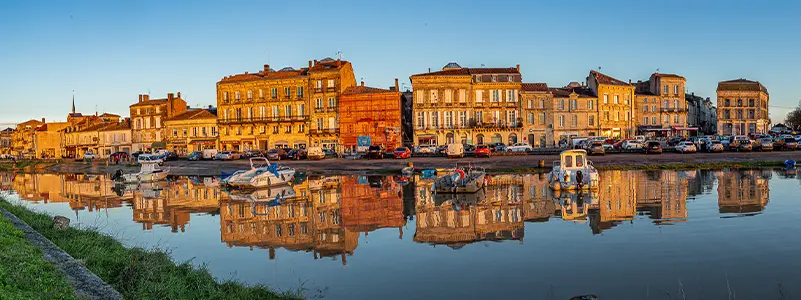
Blaye

Bordeaux
Bordeaux is city on the Atlantic Ocean and its port hosts big ships. The city had initially the name Burdigala and was established in III Century B.C. by the Gallic people.
It was a neuralgic centre for the International commerce of tin and lead. After the arrival of the Romans, Bordeaux becomes one of the richest cities of Gallia and is robbed many times by populations such as Visigoths and Vandals. With the passing of time, the City starts economic relationships with England trading in salt and wine and, in XVI Century, also the colonial sugar and slaves start having a leading role in the sustenance of the city.
Bordeaux has a liveable city centre that can be visited by foot and that offers beautiful attractions and energy. At night, the city get crowded with young people filling up the main squares and the bars where you can taste excellent wines and plunge in the romantic atmosphere that the city assumes after the sunset. You can’t miss out Château de la Brède, a gothic style castle dated back to XIV Century, surrounded by a moat and an English garden. The philosopher Montesquieu lived here and tourists can visit his library and his bedroom that are just like they were in XIX Century.
We suggest to visit also the beautiful Saint Eloi Church. Established in XII Century, the construction and renovation works lasted until 1400’s. The current structure is dated back to this period. The church is one of the stop-overs of Santiago de Compostela walking tour and is part of UNESCO World Heritage. Bordeaux offers a wide variety of gastronomic and wine choices. There are many restaurants and bars where you can taste the best wines on the market and an amazing cuisine.
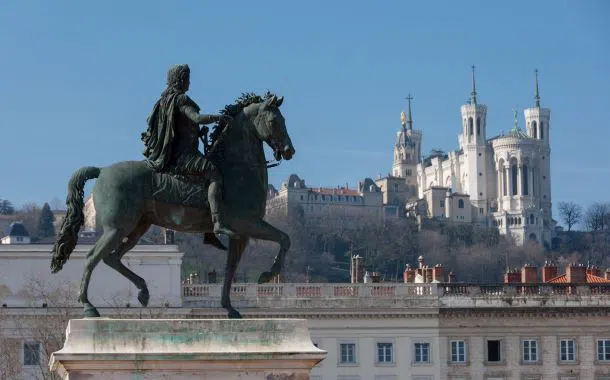
Lyon
Lyon is the third largest city in France after Paris and Marseille and offers many attractions for those who visit it. Its historic center became part of the UNESCO World Heritage Site in 1998 and is rich in museums, monuments, churches, parks and views. It also offers a noteworthy gastronomic culture.
The historic center of the city, called Presqu'île, peninsula, houses the Museum of Fine Arts, the Basilica of Saint-Martin d’Ainay, the Church of Saint-Nizier and many other buildings of great historical and cultural significance. The Presqu'île is also the heart of Lyon's life, where you will find shops, restaurants, and clubs.
On the west hill of the city is the historic center of Fourviéres, reachable by two funiculars, one of which is among the oldest in the world and still functioning. In December it hosts one of the most characteristic festivals in Europe, the Lyon Festival of Lights. Between 5 and 8 December, about seventy installations enliven the streets, squares, and buildings of the city, creating a particularly evocative atmosphere that attracts thousands of visitors every year.
Lyon is also the city that gave birth to Antoine de Saint-Exupéry, the "father" of the Little Prince, and paid homage to him by building a monument in Place Bellecour seventy years after his death.
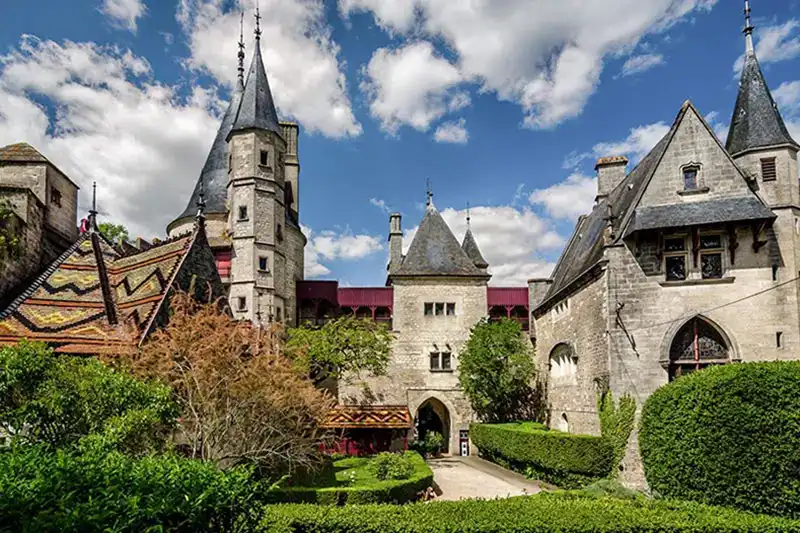
Tournus
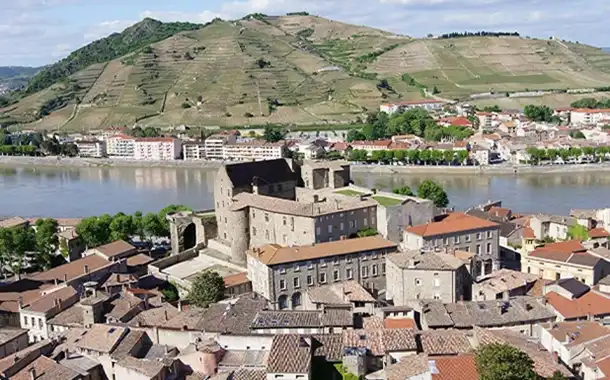
Tournon
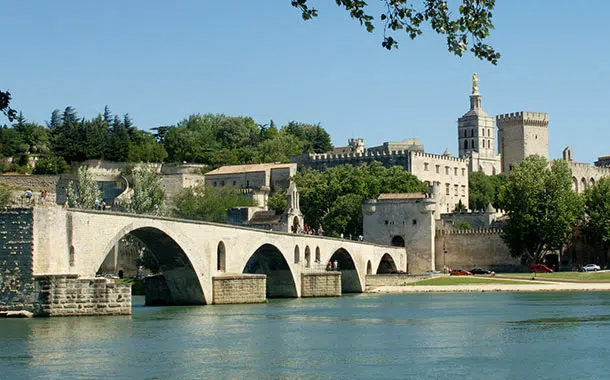
Avignone
Avignon is a city of Southern France with ancestral origins. The area on which the city is now has been inhabited by humans since the Stone Age. The city has been property of many populations such as the Romans and the Burgundi. It then became independent and afterwards, France took possession of it. Avignon is an ancient papal city after that John XXII made it his residence in 1316.
The Palais des Papes, facing onto a wide square, is a touristic destination all year round. After you have visited the palace, have a walk on the Promenade des Papes that will take you to the gardens where the popes used to cultivate aromatic herbs. The walls of the city are noteworthy: they are 4 km long with 39 towers and 7 doors, making the city a treasure to shield. Avignon has a rich cultural heritage, but leisure and relaxation are not missing at all. Having a walk in the city centre you can find many bars and bistrot where you can taste the specialties of the most famous cuisine in the world and immerge in the magic atmosphere that surrounds the whole city.

Avignone
Avignon is a city of Southern France with ancestral origins. The area on which the city is now has been inhabited by humans since the Stone Age. The city has been property of many populations such as the Romans and the Burgundi. It then became independent and afterwards, France took possession of it. Avignon is an ancient papal city after that John XXII made it his residence in 1316.
The Palais des Papes, facing onto a wide square, is a touristic destination all year round. After you have visited the palace, have a walk on the Promenade des Papes that will take you to the gardens where the popes used to cultivate aromatic herbs. The walls of the city are noteworthy: they are 4 km long with 39 towers and 7 doors, making the city a treasure to shield. Avignon has a rich cultural heritage, but leisure and relaxation are not missing at all. Having a walk in the city centre you can find many bars and bistrot where you can taste the specialties of the most famous cuisine in the world and immerge in the magic atmosphere that surrounds the whole city.
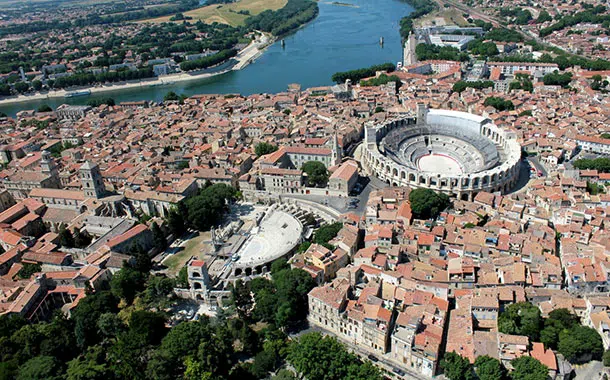
Arles
Sail into Serenity from Arles!Embark on an enchanting river cruise from the artistic and historical city of Arles, nestled in the heart of Provence. As you depart from this city that inspired Van Gogh, you'll find yourself surrounded by Roman heritage and picturesque landscapes. A cruise from Arles offers a unique blend of cultural discovery and tranquil riverine beauty, promising a serene journey through the captivating South of France.
Arles is a French city facing onto the Rhône and it is one of the best cities where you can start a tour of Camargue. In Arles you can find ancient monuments dated back to the Roman Age such as the amphitheatre, where in the past the gladiators had their fights, and the old theatre, used now as summer arena for open-air cinema. Have a walk along the Alyscamps, a long promenade that leads to a church and surrounded by cypresses. This kind of landscape inspired Van Gogh in many of his paintings. The artist chose Arles as his home for a long time. It was in this city that the Dutch artist painted some of his most famous works, such as the sunflowers, the Potato Eaters, Starry Night and many more. Don’t miss the underground quadrilateral called Cryptoporch, rising under the Cathedral square and build in order to support the Roman court and that was used as a granary.
Besides the endless architectural works, Arles offers many restaurants and bistrots where you can taste the typical dishes, such as the famous fish soup.
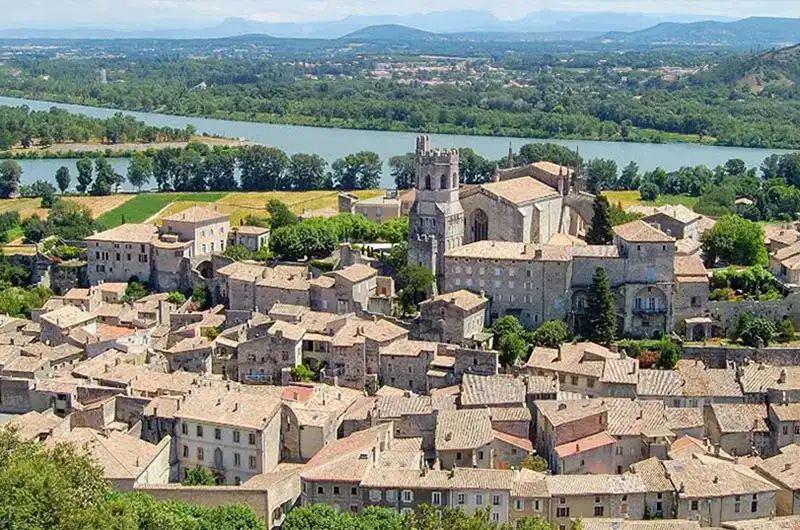
Viviers

Lyon
Lyon is the third largest city in France after Paris and Marseille and offers many attractions for those who visit it. Its historic center became part of the UNESCO World Heritage Site in 1998 and is rich in museums, monuments, churches, parks and views. It also offers a noteworthy gastronomic culture.
The historic center of the city, called Presqu'île, peninsula, houses the Museum of Fine Arts, the Basilica of Saint-Martin d’Ainay, the Church of Saint-Nizier and many other buildings of great historical and cultural significance. The Presqu'île is also the heart of Lyon's life, where you will find shops, restaurants, and clubs.
On the west hill of the city is the historic center of Fourviéres, reachable by two funiculars, one of which is among the oldest in the world and still functioning. In December it hosts one of the most characteristic festivals in Europe, the Lyon Festival of Lights. Between 5 and 8 December, about seventy installations enliven the streets, squares, and buildings of the city, creating a particularly evocative atmosphere that attracts thousands of visitors every year.
Lyon is also the city that gave birth to Antoine de Saint-Exupéry, the "father" of the Little Prince, and paid homage to him by building a monument in Place Bellecour seventy years after his death.

Lyon
Lyon is the third largest city in France after Paris and Marseille and offers many attractions for those who visit it. Its historic center became part of the UNESCO World Heritage Site in 1998 and is rich in museums, monuments, churches, parks and views. It also offers a noteworthy gastronomic culture.
The historic center of the city, called Presqu'île, peninsula, houses the Museum of Fine Arts, the Basilica of Saint-Martin d’Ainay, the Church of Saint-Nizier and many other buildings of great historical and cultural significance. The Presqu'île is also the heart of Lyon's life, where you will find shops, restaurants, and clubs.
On the west hill of the city is the historic center of Fourviéres, reachable by two funiculars, one of which is among the oldest in the world and still functioning. In December it hosts one of the most characteristic festivals in Europe, the Lyon Festival of Lights. Between 5 and 8 December, about seventy installations enliven the streets, squares, and buildings of the city, creating a particularly evocative atmosphere that attracts thousands of visitors every year.
Lyon is also the city that gave birth to Antoine de Saint-Exupéry, the "father" of the Little Prince, and paid homage to him by building a monument in Place Bellecour seventy years after his death.
